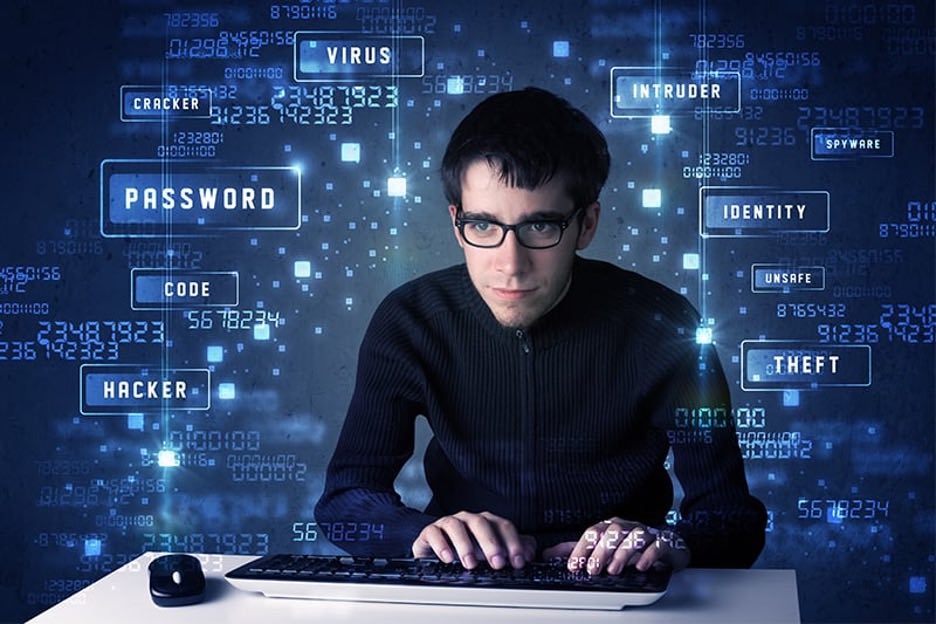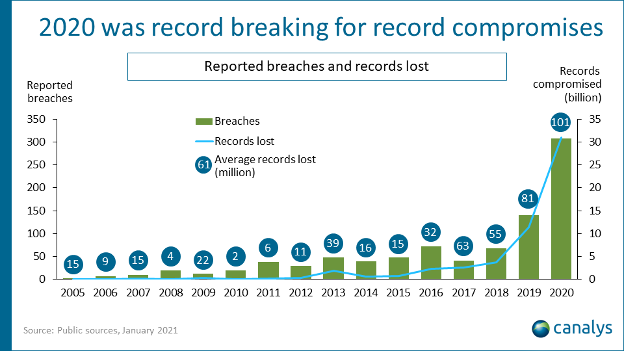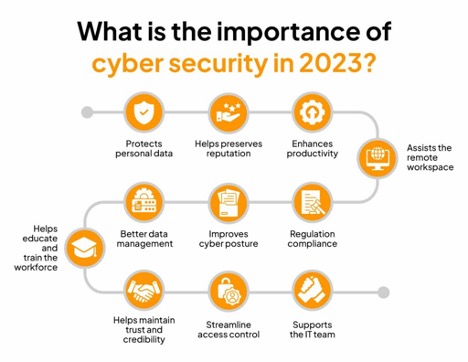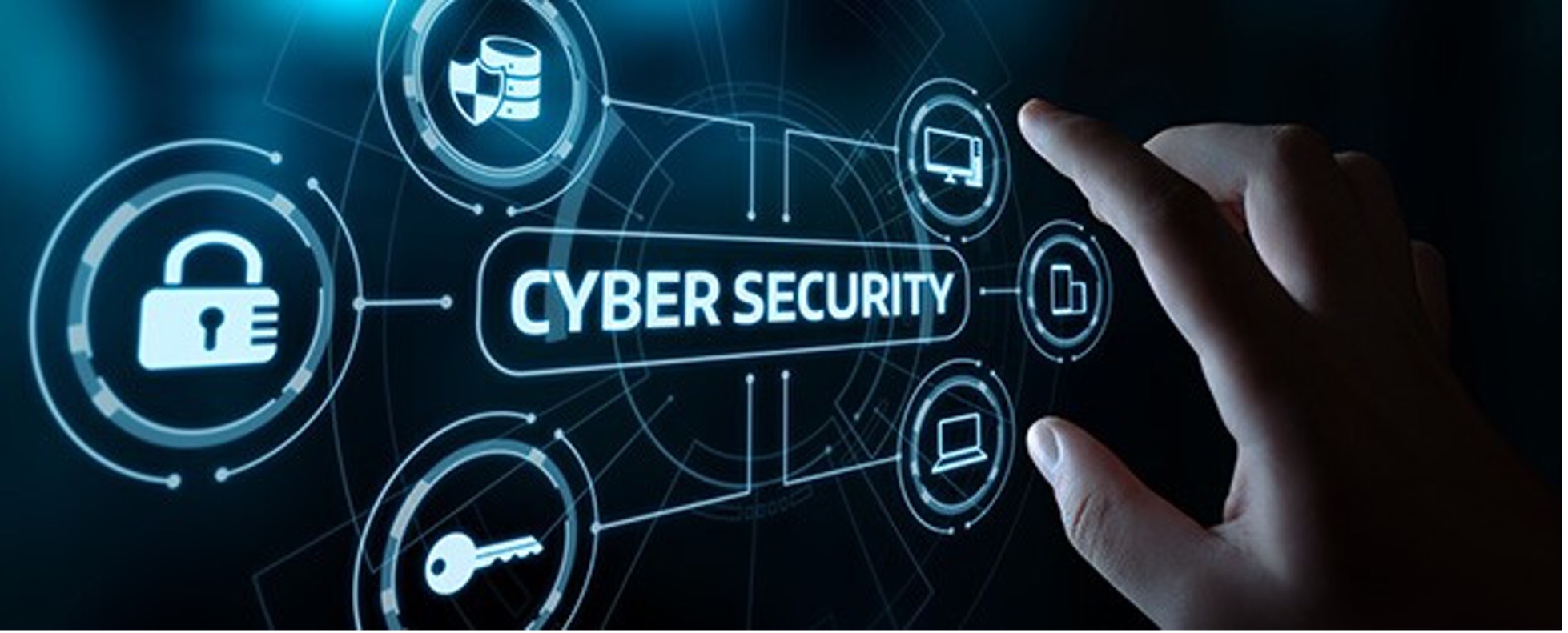With the ever-growing technology, all of us have witnessed rapid digitalisation all over the globe. Some decades ago, we could not even have thought of a time when everything would not be limited to a seven-inch screen. From academics to leisure, we are now dependent on the internet and electronics to help us accomplish everything. Moreover, during these tough times, when all of us are forced to stay indoors, it is this technological advancement that has helped us continue our jobs and education. But as every coin has two sides, everything about technology is not advantageous. It has its own set of disadvantages, which can be extremely detrimental.
Cybersecurity tends to be one of the essential domains of security. In this modern world of rapid digitalisation and technological development, cyberspace has become one of the only platforms where people are active and effectively participate. From social media applications to softwares that assists work, it becomes necessary to ensure safety and security over digital media platforms. Almost every day, newspapers are filled with headlines pertaining to media threats, data breaches and cyber frauds. Such acts tend to have impactful consequences on the lives of people.

The recent news of Rashmika Mandanna’s deep fake video getting viral is one of the alarming incidents that could scare us all. The video shows a woman dressed in a black dress. The face has been edited using Artificial intelligence to resemble Mandanna. It raises a lot of questions pertaining to the safety of people over the Internet and the protection of their right to privacy. This is where cybersecurity comes into play.
Technically examining cybersecurity tends to advocate for an effective method in order to save people from any kind of fraud and cybercrimes. In simpler words, the essential objective of cybersecurity is to prevent people’s data from being stolen or co-operated. There are three objectives of cybersecurity that are essential to realise- One, Maintaining the privacy of information; two, Preserving the integrity of information; and Three, Controlling the obtainability of information.
Cybercrime is one such dark side of technology. We often now read about cases of breach of data, hacking of devices, online harassment and various other examples from our daily lives. According to a blog on cybercrime, the database of about 280 million Microsoft users was left unprotected. Very often, we have witnessed that the personal information of lakhs of Facebook users has been susceptible to vulnerabilities in the cyber world. Such incidents leave us worried about our safety and security in the digital world.
Before diving deeper into the negative effects of such crimes, let us attempt to understand the ways in which cybercrime occurs, especially in the context of data breaches. Though there are various ways in which cyber-crimes are committed, data breach is concerned with consumers and consumer data, and it is important for us to understand that. A data breach occurs when a cybercriminal tries to infiltrate a particular data source and gets hold of sensitive and confidential information. We, as consumers, tend to provide our personal data to companies and the government for various purposes, which is why it is really important for us to pay attention to this.
Here are some of the ways in which data breach occurs:
Ransomware– It is a kind of software that gains access to the data and then locks them. To release them, a fee is demanded from the real owner. This is more like kidnapping in more real-life terms.
Malware– This is somewhat more commonly used. This software is created to harm the software and probe the system. A ‘warning’ appears and convinces the users to download a specific kind of software that does not damage the physical hardware but can steal or hijack the information.
Phishing– This is also one of the most common ways that are used by cybercriminals. It basically involves sending fraudulent emails that seem to be sent by reputed companies with the aim of deceiving recipients into clicking on a malicious link or downloading an infected attachment.
Denial of Service– As the name suggests, this involves the creation of fake requests to a particular server that tends to overload the system and leads to denial of some legitimate requests.

Another less explored dimension of cybercrime is Cyberterrorism. To journalists, politicians and global organisations, cyberterrorism seems to be a very contemporary threat, which might result in a global issue sooner. With the advancement in technology, even terrorists choose to make the best use of the technology in order to take control of the situations and serve their interests. More importantly, the Western countries are more linked with technology and are also exclusively dependent on the same. Cyberterrorism has its roots in the same context, as the security systems are heavily technology dependent; they tend to attack the same and make the most of the vulnerabilities.
It seems difficult to particularly define cyberterrorism because it tends to refer to a very recently occurring phenomenon. Often, it is assumed ‘cyber’ means something related to computers and digital space, so people tend to associate it with the digital world. It tends to comprise various phenomenon that tends to indicate activities that are unlawful and are against the interest of humanity.
Carefully analysing the recent trends in technology and our lives, cybersecurity tends to have a special place in the world of technology. Our identities are gradually shifting online. From e-mails to social media for entertainment, we have an ‘E-identity’ apart from our real identity. A major part of our lives is also spent over the Internet, so it really becomes important to be vigilant about the part of our identity that stays on this medium.
Essentially, Power, Presence and Privacy are the three key essential factors with reference to cybersecurity, as modern technology is very powerful. People are always surrounded by technology even when they think they are not. It becomes really important to make sure that we take small steps and stay cautious of any such malicious activity.

Conclusively, people are becoming increasingly concerned about companies having access to or storing their personal data. According to some findings, the proportion of people who have experienced a cyber-security breach has increased significantly since 2013, and fewer people are ‘doing nothing’ as a result. Companies must now be honest not only in how they use their customers’ Personal information but also in how they present the benefits and hazards of sharing their information.
As informed Internet users, we can always try to make ourselves aware of the ways in which such crimes can take place. It has been observed that people enjoy the benefits of technology but are not interested in making themselves informed about the same. Also, we can follow very basic things like frequently changing passwords, carefully logging in to the devices that are familiar to us, staying a bit cautious while surfing the internet, ensuring the installation of anti-virus software on the devices and many other things. It is not that we cannot ever protect ourselves from the vulnerabilities of the cyber world; it is just that being extra vigilant while working over the internet would help us in keeping such risks at bay.
Written by – Gargi Singh
Edited by – Mrunmayee Patwardhan




